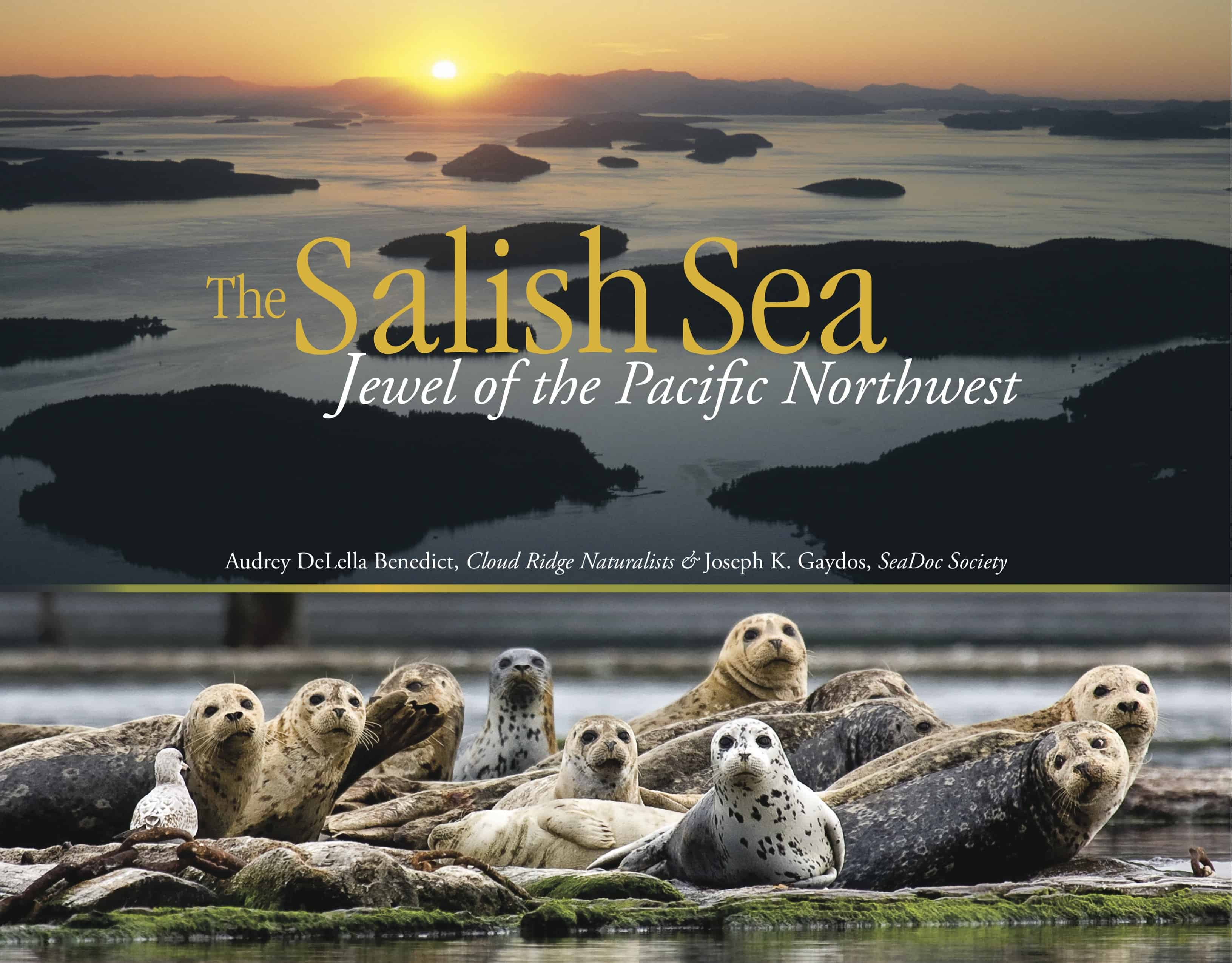The Salish Sea: Jewel of the Pacific Northwest
 As part of our “Nature in Writing” series, Joseph K. Gaydos and Audrey DeLella Benedict read from The Salish Sea, Thursday, April 16, 7 pm, in the Readings Gallery at Village Books in Bellingham. Free!
As part of our “Nature in Writing” series, Joseph K. Gaydos and Audrey DeLella Benedict read from The Salish Sea, Thursday, April 16, 7 pm, in the Readings Gallery at Village Books in Bellingham. Free!
We paddle and sail on it, comb its beaches, stroll its shores. We are drawn to it for fishing, birdwatching, tidepooling, crabbing, sunset gazing and occasionally even swimming. The Salish Sea defines life in the Fourth Corner, providing not only livelihood and sustenance but also opportunities for relaxation, play, adventure and spiritual nourishment.
A new title from Sasquatch Books, written by the Chief Scientist for the SeaDoc Society and the founder of Cloud Ridge Naturalists, aims to educate Pacific Northwesterners about the intricate ecosystem of our inland sea. Joseph K. Gaydos and Audrey DeLella Benedict combine engaging science writing with an array of stunning photographs to produce The Salish Sea: Jewel of the Pacific Northwest.
Several local photographers provided images for the book, including Brett Baunton, John D’Onofrio, Jessica Newley, John Scurlock, Art Wolfe and the Whatcom Museum archives.
The idea for grouping together the Puget Sound, Strait of Juan de Fuca and Strait of Georgia under one moniker originally came from Bert Webber, a retired professor of environmental and marine science at Western Washington University. Thinking of the interconnected, transboundary waters as one cohesive whole — the Salish Sea — helps citizens to “think like a watershed” and better strategize international management of the ecosystem and its wealth of resources.
Wise management is crucial as approximately eight million people live in the Salish Sea ecosystem, with another million projected to settle here over the next ten years. The impacts from extensive human development of the shorelines and uplands are being felt throughout the region.
The Health of the Salish Sea Report, issued by the US Environmental Protection Agency and Environment Canada, gives our treasured inland sea mixed grades.
What they’ve found: 113 marine species and sub-species are formally listed as being at risk or vulnerable to extinction, including 56 birds, 37 fish, 15 mammals, three invertebrates and two reptiles. Also, marine-dissolved oxygen is in long-term decline, and the last few decades have seen steep declines in iconic orca whales and Chinook salmon. Ten of the 17 rivers studied show strongly significant decreasing summer flow trends due to lower snowpacks in the mountains, surface and groundwater withdrawals, and other issues.
On the positive side, air quality has been improving, freshwater quality is general holding steady, nearly 4,00 acres of previously closed shellfish beds in Puget Sound have re-opened due to improvements in water quality and levels of PCBs and PCBEs are declining in harbor seals.
This new book — which is divided into sections that explore different ecological niches like “Life at the Edges,” “Denizens of the Deep” and “Bizarre and Beautiful Fish” — takes the approach of saving the Salish Sea by educating people about it.
“Once people know a place…they become connected to it,” the authors write. “And once people connect to an ecosystem, it becomes personal and they want to protect and restore it.”
Through maps, charts, satellite imagery, nature photography and writing, Benedict and Gaydos concoct an engaging presentation of the natural history of our “jewel of the Pacific Northwest.” Their mantra of “know, connect, protect and restore” is a hopeful way forward in to a challenging future.
Read the Health of the Salish Sea Report at http://www2.epa.gov/salish-sea/marine-species-risk

